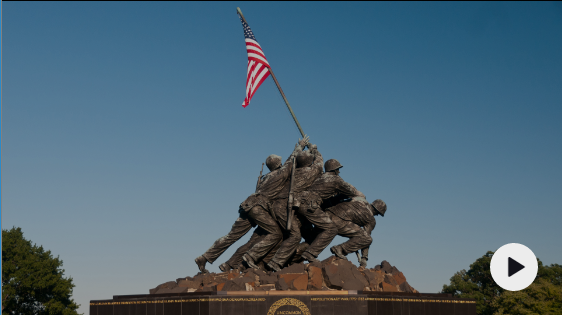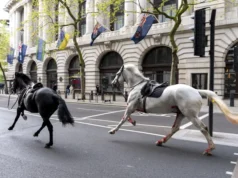
During the bloody Battle for Iwo Jima, U.S. Marines from the 3rd Platoon, E Company, 2nd Battalion, 28th Regiment of the 5th Division take the crest of Mount Suribachi, the island’s highest peak and most strategic position, and raise the U.S. flag. Marine photographer Louis Lowery was with them and recorded the event. American soldiers fighting for control of Suribachi’s slopes cheered the raising of the flag, and several hours later more Marines headed up to the crest with a larger flag. Joe Rosenthal, a photographer with the Associated Press, met them along the way and recorded the raising of the second flag along with a Marine still photographer and a motion-picture cameraman.
Rosenthal took three photographs atop Suribachi. The first, which showed five Marines and one Navy corpsman struggling to hoist the heavy flag pole, became the most reproduced photograph in history and won him a Pulitzer Prize. The accompanying motion-picture footage attests to the fact that the picture was not posed. Of the other two photos, the second was similar to the first but less affecting, and the third was a group picture of 18 soldiers smiling and waving for the camera. Many of these men, including three of the six soldiers seen raising the flag in the famous Rosenthal photo, were killed before the conclusion of the Battle for Iwo Jima in late March.
In early 1945, U.S. military command sought to gain control of the island of Iwo Jima in advance of the projected aerial campaign against the Japanese home islands. Iwo Jima, a tiny volcanic island located in the Pacific about 700 miles southeast of Japan, was to be a base for fighter aircraft and an emergency-landing site for bombers. On February 19, 1945, after three days of heavy naval and aerial bombardment, the first wave of U.S. Marines stormed onto Iwo Jima’s inhospitable shores.












